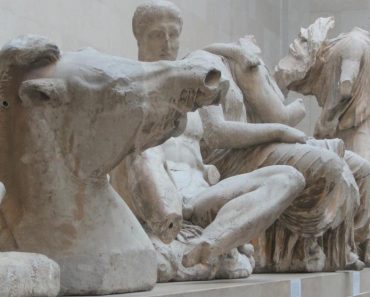As the Hellenic Parliament building in Greece undergoes a significant restoration process, it is revealing intriguing secrets from its past. Nearly 180 years after its construction, this iconic structure is getting a complete makeover of its facade.
According to To Vima, the President of the Parliament, Costas Tasoulas, recently invited MPs Theodora Tzakri and Pavlos Christidis to witness a fascinating discovery unveiled during the restoration. Beneath the facade of the Greek Parliament, foundations made of stone have been uncovered.
In a remarkable demonstration, the Speaker of the Parliament also shared these historic findings with the President of the Republic, Katerina Sakellaropoulou. The stones, resilient against earthquakes and fires, have provided a solid foundation for the building over the past century and a half.
The neoclassical building, constructed between 1836 and 1843, was initially a royal palace for King Otto of Bavaria. Designed by German architect Friedrich von Gärtner, its architecture reflected ancient Greek styles. The original design included a square layout with four three-story wings, a two-story central section, and two courtyards. Although many of its historical interior decorations have not survived, the building’s grandeur remains.
After the Greek Republic was established in 1924 and the monarchy was abolished, the building served various purposes, including housing the air force defense, the Greek Red Cross, a hospital, and refugee relief organizations. It became the home of the Greek parliament in 1935.
Over the years, the building has evolved to meet changing needs, undergoing significant structural changes and modernizations. These include the reconstruction of the central wing, a new northern entrance, added parliamentary chambers, a parking structure, enhanced landscaping, and technological upgrades.







